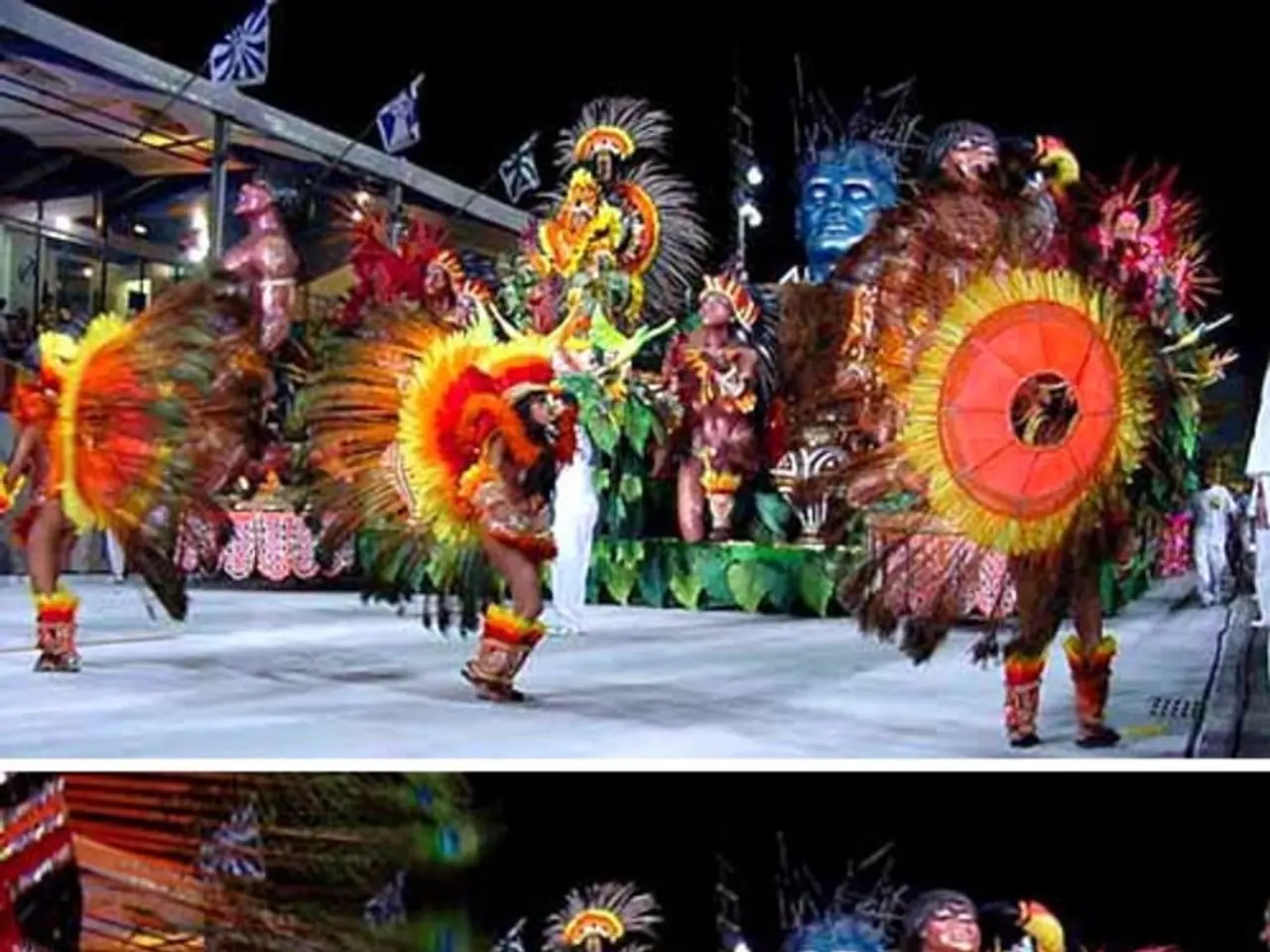Abramović Method: A Unique Approach to Artistic Expression
In the heart of a picturesque park, nestled among sculptures and vibrant hydrangeas, lies Moyland Castle, a 19th-century water castle in Germany. But this isn't just any ordinary castle; it houses the world's largest Joseph Beuys archive, a seminal and polarizing figure in the art world.
Beuys, born in Krefeld in 1921, began his artistic journey after his return from the war in the late 1940s. Known for his pioneering role in expanded conceptions of art, Beuys' work integrated social, political, and ecological themes into performance, sculpture, and conceptual work. His art blurred the boundaries between life and art, often involving personal symbolism and socially engaged actions.
The MAI, a nomadic institution founded by Marina Abramović, has made its first "residency" at Moyland Castle Museum. This unique collaboration has resulted in new site-specific works that merge Beuys' archive materials with contemporary performance art in the style of the MAI.
Abramović, a renowned performance artist, is known for pushing boundaries and challenging her own body and mind. While her work tends to focus more on individual body and psychological experience, Beuys expanded performance to include societal healing and ecological unity, envisioning art as a catalyst for collective change.
Thirteen international artists were selected by the curatorial team of Antje-Britt Maahlmann, Serge le Borgne, and Billy Zhao for this exhibition. The artists researched the artist at Schloss Moyland and sought the foundation for their performances in March.
One of the most striking pieces is Abramović's reinterpretation of Beuys' 1965 performance "How to Explain Pictures to a Dead Rabbit" at the New York Guggenheim Museum forty years later. This work, like many of Beuys' performances, was often ritualistic and symbolic, emphasizing the artist’s life and social ideas as part of the art experience.
Beuys' work shares a key conceptual link with Abramović's, as both artists use performance as a medium to challenge traditional roles of art and engage deeply with the audience and society. Beuys' performances were often about art as a transformative social and political force beyond mere aesthetic objects, a philosophy that resonates with Abramović's work.
The Abramovic Method, a legacy of her performance art, is being taught and can be learned by anyone. This method emphasizes understanding performance art as a language, teaching meditation, breathing, and maintaining eye contact.
Beuys' influence can be seen in the way he paved the way for artists like Abramović, creating sculptures and heating up passions with action art from the 1960s onwards. His idea of the "social sculpture," which makes the audience co-creators, is evident in the "the artist is present" performance.
The current exhibition at Moyland Castle Museum creates a surprising dialogue with Beuys and a symbiosis with Abramović, showing that their artistic ideas live on. This exhibition is a testament to the power of art as a transformative social and political force, a legacy that Beuys and Abramović continue to inspire.
Marina Abramovic has been awarded the Japanese Praemium Imperiale, often referred to as the "Nobel Prize of the Arts." Despite no longer performing herself, she organizes events, such as operas and workshops, that continue to push the boundaries of performance art.
Beuys' connection with nature, spirituality, and healing is also evident in his work. He had 7000 oak trees planted in Kassel to promote ecological awareness and permanently change the urban space. This commitment to ecology and sustainability is a valuable lesson for all artists and art enthusiasts today.
In conclusion, the MAI's residency at Moyland Castle Museum has resulted in an exciting and thought-provoking exhibition that brings together the works of two of the most influential performance artists of our time. The dialogue between Beuys and Abramović shows that art is not just a static object, but a living, breathing, and transformative force that challenges us, engages us, and inspires us to think and act differently.
- I'm not sure if the incorporation of contemporary performance art by Marina Abramović in Moyland Castle, influenced by the works of Joseph Beuys, can be considered purely as entertainment, given their intent to provoke thought and inspire social change.
- Despite the polarizing nature of their art, it's intriguing to examine the connection between Joseph Beuys and Marina Abramović, two celebrities in the world of performance art, whose work shares a common goal of transforming art into a catalyst for societal change.








